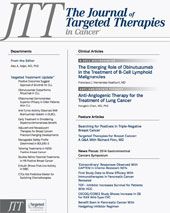Eribulin Shows First-Line Activity in MBC
Eribulin mesylate has demonstrated clinical benefit as a first-line therapy for locally recurrent or metastatic HER2- negative breast cancer, according to results of a phase II, multicenter, single-arm study.
Eribulin mesylate has demonstrated clinical benefit as a first-line therapy for locally recurrent or metastatic HER2- negative breast cancer, according to results of a phase II, multicenter, single-arm study.
“Eribulin has been approved by the FDA in late-line metastatic breast cancer, and it showed an overall survival benefit in patients who had taken previous anthracyclines and taxanes who had equal or more than two cycles of previous chemotherapy,” said Kristi McIntyre, MD, principal investigator of the study, at the San Antonio Breast Cancer Symposium in December 2013.
“We wanted to move it to first line and see, in the initial phase II study, its efficacy and safety profile. The overall response rate was quite favorable at 29%, but the clinical benefit rate, which was CR, PR and stable disease, was 52%, which is quite favorable,” said McIntyre, a medical oncologist and hematologist with Texas Oncology, Dallas, Texas.
Patients with ≥12 months since prior neoadjuvant or adjuvant chemotherapy received eribulin mesylate 1.4 mg/ m2 IV on days 1 and 8 of each 3-week cycle. The primary endpoint was objective response rate (ORR), and secondary endpoints included safety, progression-free survival (PFS), time to response (TTR), and duration of response (DOR). Tumor assessments were conducted every 6 weeks for the first 6 cycles and every 6 to 12 weeks thereafter per RECIST 1.1.
Fifty-six patients enrolled and received eribulin. Thirty-two patients (57%) completed at least 6 cycles of treatment; among the 24 patients who completed fewer than 6 cycles, reasons for not completing were progressive disease (PD; n=18), adverse events (AEs; n=3), and patient choice (n=3).
Stable disease (SD) rate was 48%. Median PFS was 6.8 months. Thirty-five patients (63%) had grade 3/4 treatment-related AEs. Treatment-related serious AEs occurred in five patients (9%): neutropenia (5%), febrile neutropenia (5%), and leukopenia (2%).
“Eribulin is a non-taxane, but it also targets the microtubule as a taxane would. Clinically, being a non-taxane is important because you don’t have hypersensitivity reactions and the requirement for premedications, etc. It is very convenient to give. Its convenience really helps patient stick with it,” McIntyre said.
